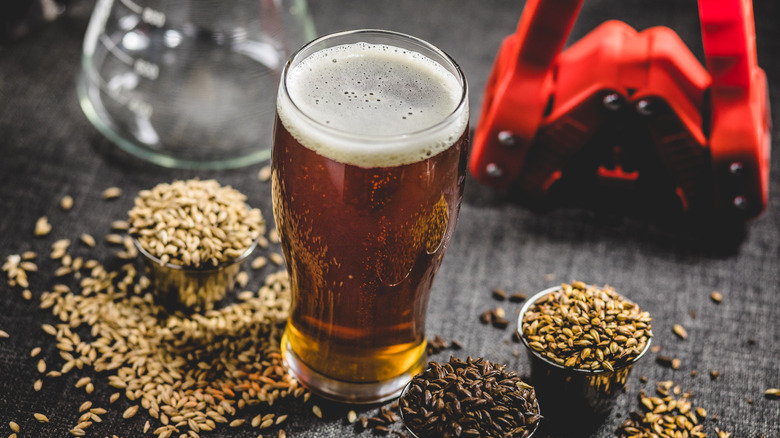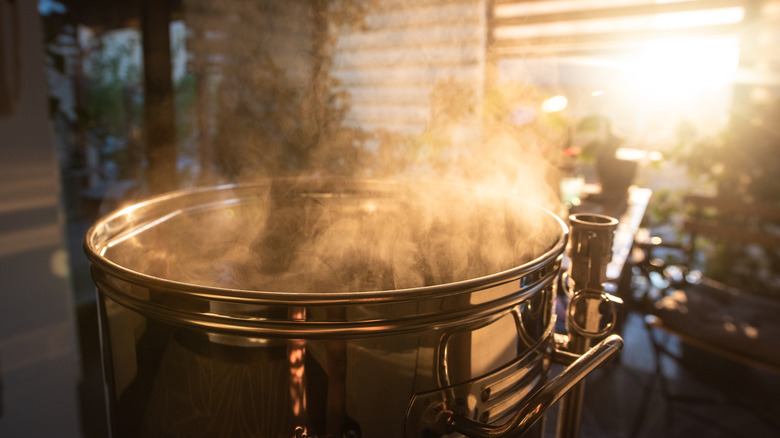The 5 Red Flags An Expert Brewer Looks Out For In Homemade Beer
Brewing your own beer can be exciting, but it can also be a bit daunting. What, exactly, can go wrong? Mashed spoke to Jeff Tyler, co-owner and head brewer for Spice Trade Brewery & Kitchen, who offered five key indicators that your batch of homemade beer may be better off poured down the drain.
There's a lot to know about beer before you take a sip, and unfortunately, there's no real way of examining a homemade brew's quality without giving it a taste. Tyler warns to look out for odd flavors, each of which signifies something different. For example, if a beer has "papery flavors," such as "wet cardboard [or] sherry," that means it has oxidized. A "savory flavor," which Tyler likens to "meat or ham" but may also taste like soy sauce or marmite, is a sign of autolysis, or ruptured yeast cells. Diacetyl causes your beer to taste of "popcorn butter" if the yeast fails to properly absorb it during fermentation. If you taste and smell "rubbing alcohol," that's a sign of chlorophenols, which occur during a reaction between the chlorine present in some cleaning fluids and the phenols naturally present in beer.
The final sign is more tricky to spot, and is described by Tyler as "residual sweetness." While some brewers deliberately infuse their beer with extra sugars, an unexpected sweet flavor may be a result of poor temperature control. Turning the temperature too high during mashing, for instance, will produce dextrin molecules which cannot be fermented.
Take care of your kit to prevent off-tasting beer
While looking at all of these issues together is intimidating, they can be fixed if you follow the non-negotiable rules of home brewing. Per Jeff Tyler, "Most of them can be prevented with proper cleaning, sanitization, and temperature control during fermentation."
Maintaining your equipment regularly can prevent issues with oxidation, diacetyl, and chlorophenols. Some oxidation is inevitable, but ensuring that nothing is leaking or loose will minimize excess air. To avoid that rubbing alcohol taste, don't use a chlorine-based cleaner to maintain your brewing kit; or make sure you're closely following instructions if a chlorine cleaner is required. Diacetyl can occur due to pediococcus and lactobacillus bacteria, which thrives in dirty brewing equipment.
If you want to prevent diacetyl, autolysis, and residual sugars, temperature control is key. Typical fermentation temperatures range from 66 to 72 degrees Fahrenheit, with larger batches requiring a lower temperature. Fermenting below the temperature inhibits proper fermentation, which causes diacetyl, while high heat can induce autolysis and residual sweetness. There are several ways to regulate temperature, but finding the right spot in your home for brewing your own beer is a good start. Even if your beer has some of these issues, Tyler says "for the most part, you are safe." Diacetyl is linked to lung issues if inhaled, but its presence in beer is considered safe. Per Tyler, "There are very few things that can happen to beer that will make you sick when drinking it."

